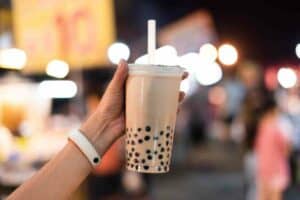Like many foreign specialties, recipes change and adapt as they move away from their country of origin – and sushi is no different.
Though sushi originates in Japan, the sushi you see in America has many differences.
Many Japanese people who go to a sushi restaurant in America are shocked by what’s served up.
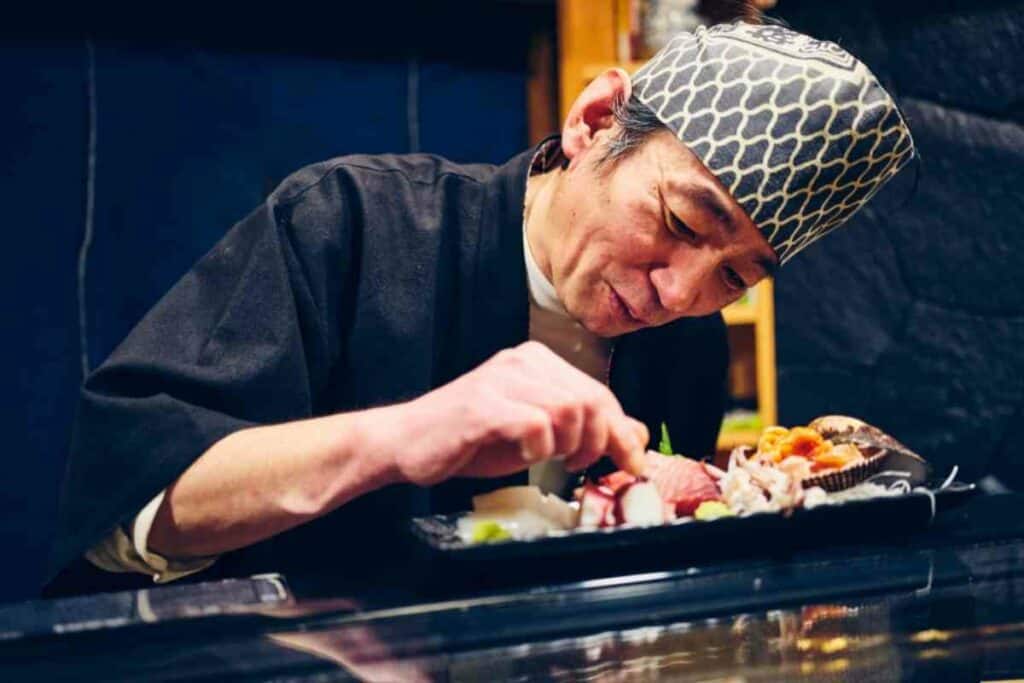
So, what are the biggest differences between Japanese sushi and American sushi?
The biggest difference is that Americans put the seaweed on the inside while Japanese put it on the outside. Another difference is that the flavors in Japan are much simpler and often concentrate on just one, perhaps two flavors. In America, however, you’ll get several flavors in each sushi roll.
Let’s look at Japanese sushi Vs American sushi in more detail.
Table of Contents
1. Japanese sushi is simpler
In American sushi, you’ll have a long list of ingredients.
This might include cream cheese, avocado, crab or fish, and vegetables all in one roll. This, of course, is a very American way of eating.
In Japan, however, distinct flavors are everything. In a Japanese sushi roll, you might just have fish, seaweed, rice and perhaps a few vegetables – but it’s much simpler overall.
2. You wouldn’t drown your sushi in soy sauce in Japan
In America, people love their condiments but in Japan sushi is not covered in soy sauce like it would be in America.

With sushi in Japan, you’d just dip a corner into the sauce a tiny bit.
The idea is that a small amount is enough because it’s’ high in salt and it becomes too messy if there is too much liquid.
Booking.com3. You wouldn’t see brown rice sushi in Japan
In America, lots of sushi restaurants have started preparing their sushi with brown rice for their health-conscious customers.
This doesn’t get sticky enough, however, and Japanese chefs would never use it.
Sushi actually means “vinegar rice” in Japan. This is a small grain white rice that is cooked together with vinegar, salt, and some sugar so that it is sticky.
4. Japanese sushi is smaller
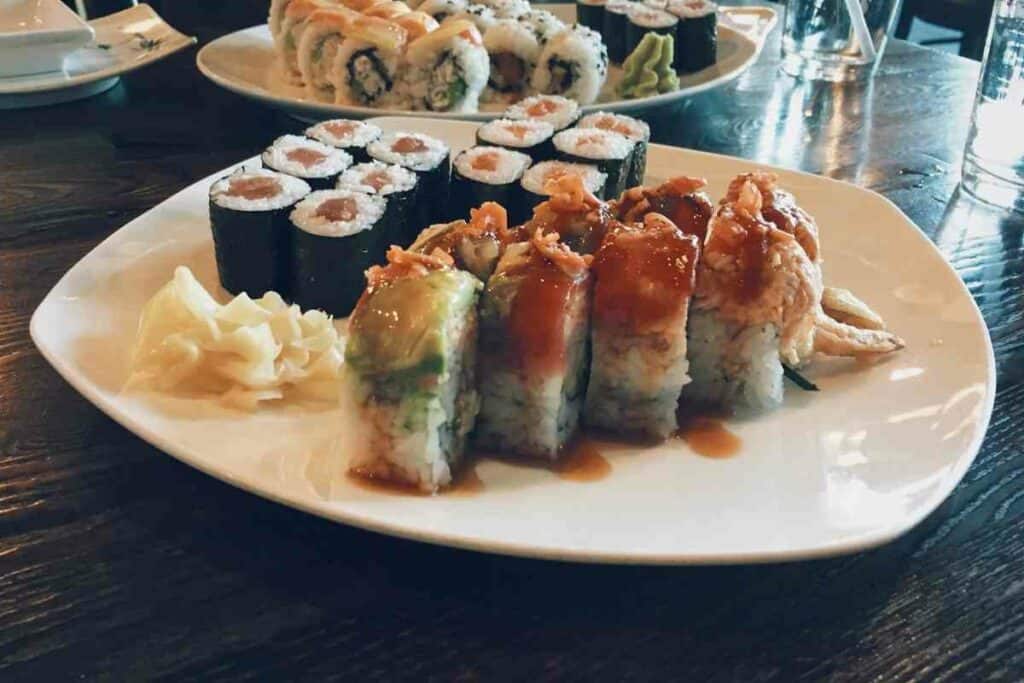
In Japan, your average sushi roll will contain six pieces, making it smaller than most sushi rolls in America.
In the United States – You’re likely to see rolls in small, medium, and large. You can even get a sushirrito, which is a mixture of a burrito and sushi.
Finally, lots of sushi in the US will be battered and fried.
5. Japanese people will eat their sushi at a bar
In Japan, you’ll be hard pressed to find a sushi restaurant.
Instead, it’s more common practice for clients to sit at a bar then a sushi chef will bring sushi out.
They’ll also suggest sushi to their customers. It’s a very interactive process and the chef and customer will talk about the ingredients.
Typically, the sushi served will include seasonal produce.
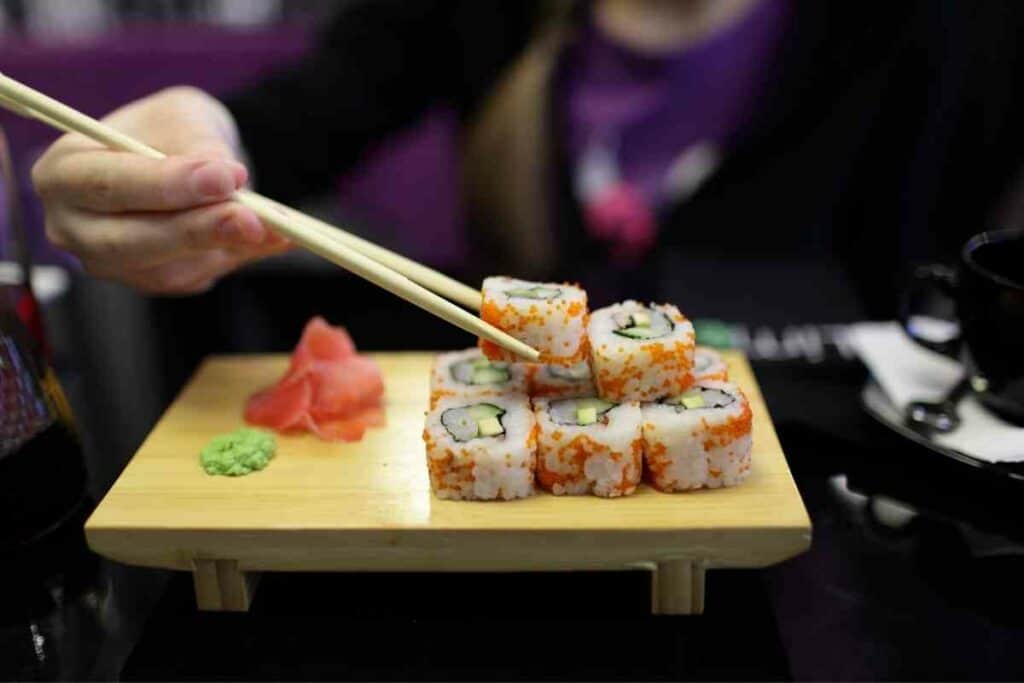
Conversely, in the United States, you have lots of sushi restaurants. These usually have menus with lots of sushi to choose from.
The chef won’t normally interact with the customers. It’s also very unlikely that the fish is fresh like it is in Japan too.
6. You won’t see Japanese customers mixing soy sauce and wasabi
If you want to see a ‘sushi sin’ it’s the way Americans will mix soy sauce and wasabi.
Japanese customers won’t do this simply because the sushi will already have the right amount of wasabi.
American customers, however, will often mix wasabi in soy sauce or add in extra wasabi to their sushi.
This also encourages American sushi restaurants to use lower-quality fish because they think their customers can’t taste the difference will all those condiments!
7. Americans will eat sushi more often than the Japanese
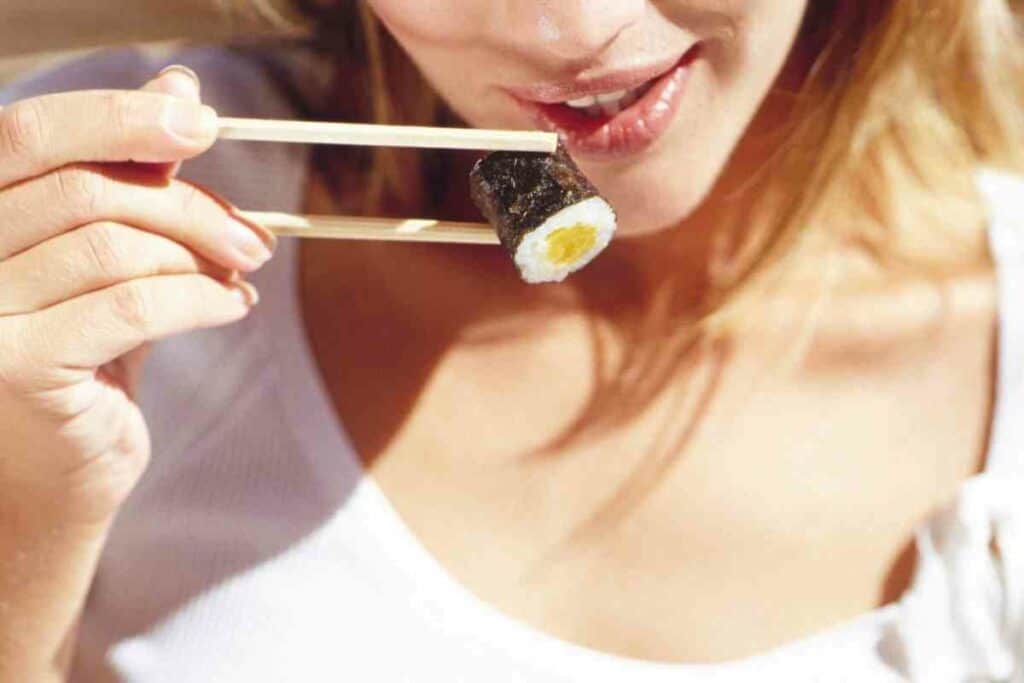
Yes, believe it or not, American people tend to eat sushi more frequently.
Some people even eat it daily. In Japan, however, sushi is usually only eaten on special occasions.
Make No Mistake – Raw fish is eaten in other dishes – even daily, but sushi is usually only eaten in business meetings, birthdays, and anniversaries.
8. Sushi chefs in Japan take many years to master their art
It takes a lot of training to be a sushi chef in Japan.
They will go to school in stages, and it takes two years or more for them to reach level 5 – and this is the lowest of the levels.
The chefs need to master slicing the fish appropriately, cook the rice to the right consistency and learn just the right amount of wasabi to include in the dish.
After level five, a sushi chef will be taken on as an apprentice under an established sushi chef.
There will be several more years with intense training before level 1 can be reached. It is at level 1 when a sushi chef is considered to be of the highest rank.
9. You won’t always find rice vinegar in American sushi
In lots of places, you might find there is no rice vinegar added to American sushi.
In Japan – Rice vinegar is added to balance out the flavor between the rice and the fish.
This is because fish is rich and so it needs something with a little acidity to create a balance.
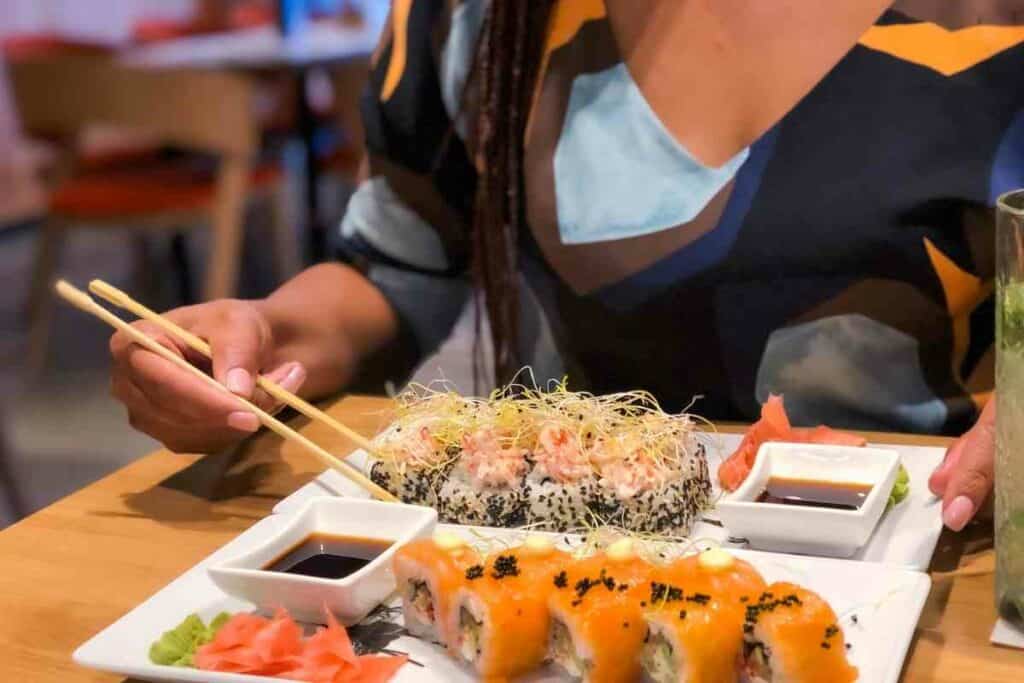
In Japan, traditional sushi will always have:
- rice vinegar
- salt
- and sugar
This gives it its uniquely balanced flavour – and it’s what makes it so famous!
10. You’ll find nori on the outer part of the sushi in Japan
In Japan, traditional sushi is constructed by laying down the seaweed (nori) layer first.
Next, the sticky rice is added and spread out.
Finally, other ingredients will be placed strategically on top of the rice before it’s rolled together with the sushi mat it’s resting on.
After being rolled, the sushi roll is cut into bite-size, individual pieces.
In America – Sushi has the rice laid onto the sushi mat first before the seaweed and other ingredients. This is one of the biggest differences as it’s very easy to see!
Final thoughts on Japanese sushi Vs American sushi
As we’ve seen in this article, traditional Japanese sushi has quite a few differences compared to the American version.
To summarize, American sushi will have lots more ingredients and flavors added while Japanese sushi will focus on one or two key flavors.
Visually, you’ll notice the difference straight away in Japanese sushi Vs American sushi because of where the nori (seaweed) layer is. The Japanese traditionally place this on the outside, while Americans have come to put the rice on the outside.
Japanese sushi chefs are well trained in their art, but they’re also trained to interact with their customers and offer them different flavors. In America, it’s likely that you won’t even see the chef!
You’ll also see Americans eating their sushi battered and deep fried with lots of soy sauce and extra wasabi – something that Japanese people won’t do.
Also Read
- Bubble Tea vs Boba Compared: What’s the Difference?
- Best Izakaya Foods for a Relaxed Night Out (My Top 10 Picks)
- Edo Kiriko Whiskey Glasses (Japanese Heritage in Every Pour)
- Japanese Viral Foods on Social Media (Discover the Top 10)
- Amezaiku: 10 Amazing Examples of Japanese Candy Art
- 25 Must-Try Japanese Desserts: Old and New

